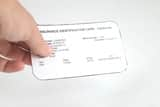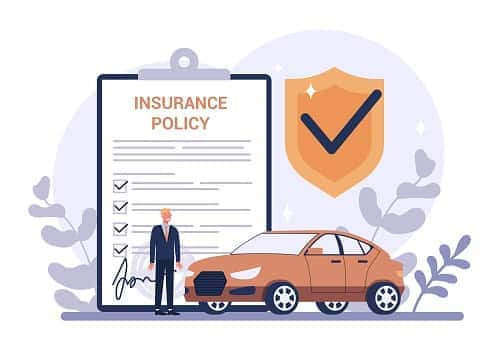What is gap insurance?
Gap insurance is a type of car insurance that covers the difference between your auto loan balance and the car's depreciated cash value in the event of a total loss.
It's common for consumers to buy cars with little or no down payment and then drive off in a vehicle worth less than what they owe when it leaves the lot. Even with a down payment, depreciation happens fast, so being upside down is not unusual. If your car is totaled, your comprehensive or collision insurance reimbursement is based on the vehicle's actual cash value, not your loan balance. You're responsible for the difference if the actual cash value is below the loan balance.
However, the insurance company will cover the difference if you have gap insurance.
Gap insurance, which some say stands for guaranteed asset protection, kicks in when your car is stolen and not recovered or is totaled in an accident. You'll need to have full coverage on your policy to have gap insurance.
How does gap insurance work?
Gap insurance applies when your car is declared a total loss covered by collision or comprehensive insurance.
This illustrates where the gap fits into your insurance protections:
- Your insured car may have a cash value of $5,000
- Assume the amount owed on your auto loan is $6,000
- An accident renders your car a complete loss
- After your deductible, your comprehensive or collision insurance should cover the cash value of your vehicle, or $5,000
- Your gap coverage would provide the $1,000 needed to pay off your auto loan
Note: Gap insurance doesn't apply a deductible, and some gap policies provide reimbursement of your comprehensive or collision deductible.
How much does gap insurance cost?
The cost of gap insurance depends on a few factors, including the make and model of your vehicle and where you buy the policy. According to an analysis by Insurance.com based on the most recent data, the average cost of gap insurance is $2,080 a year, which breaks down to about $173 per month. However, not all gap policies are alike. Some have extras, such as warranties rolled into your auto loan, which cost more.
Although it may be the most convenient option, purchasing gap insurance from your dealer is usually not the cheapest.
Attorney Steve Lehto says one issue is that the dealer gets a cut of the policy price.
"That is, the insurer simply says, 'As long as we get $300 for this, you can mark it up as much as you like.' So the policy could then be $399 ($99 profit) or $999 ($699 profit). These things are negotiable. Anyone who pays the asking price for gap at a dealer is a sucker. At the very least, call your own agent and get a competitive bid," Lehto says.
There can, however, be an advantage in buying gap insurance through a dealer.
"Sometimes the dealer coverage will pay off a portion of the loan, which was rolled in from a previous loan," says Lehto. "Whereas, gap coverage from a typical insurer only covers the loan payoff attributable to the car's purchase price."
When do I need gap insurance?
Ultimately, gap coverage comes in handy when you are "upside down" on your loan, which means your loan balance exceeds your vehicle's value.
That happens for these reasons:
- Most cars begin to lose value the second the ink dries and they morph from "new" to "used."
- Auto buyers can buy cars with smaller down payments -- or even no down payments.
- Some manufacturers let buyers make no payments for an introductory period while the car depreciates.
- Dealerships may take "upside down" trade-ins and add the deficiency to the new car loan.
- Buyers may wrap purchasing costs, such as transfer fees or extended warranties, into their loans.
- Today's auto loans are available with much longer terms, with an average of about six years. Paying the balance below the car's cash value can take years. The average auto loan length is now 69.5 months, according to Edmunds.com.
- Prices are increasing -- the average price for a new car is more than $40,000.
These trends increase the odds that your car may lose value faster than you can pay down its loan balance. That can leave you in a financially risky position.
Who should buy gap insurance?
If you purchased or leased a new car, gap insurance might be worth it, especially if you have a low down payment or a long loan term.
You need full coverage insurance to buy gap insurance; it’s an additional layer of protection on your full coverage policy and doesn’t replace any of the underlying coverages.
When deciding how much coverage you need, think "worst case." How much will you owe if you wreck your new car on your way home from the dealership? What's your car's cash value?
You probably don't need gap insurance if you could write a check for the difference without even checking your balance. But if any of these statements are true, consider buying gap insurance coverage:
- Your vehicle is leased.
- Your down payment is less than 20% of the car's value.
- Your trade-in was upside down (you had a loan balance above the vehicle's value).
- You drive more than most people, causing the car to lose value faster.*
- Your auto loan's term exceeds 48 months.
- You bought a model that depreciates quickly.
You may also want to consider loan/lease coverage or new car replacement, which differ somewhat from gap insurance.
*According to the Department of Transportation, the average driver puts 13,476 miles on his or her car annually. Men drive more than women, averaging 16,550 miles a year, compared to 10,142 miles for women. If you rack up more miles annually than the average driver, your car is likely to depreciate faster than it would otherwise.
How to get gap insurance
You can't buy gap coverage without comprehensive and collision insurance. Gap insurance picks up where they leave off.
Generally, you have 12 months to add gap insurance to your policy after purchasing a vehicle. If you're buying a new car and expect to be "upside down" from the perspective of cash value to loan value as soon as you leave the lot, you should consider buying gap insurance as soon as possible.
You may be able to get additional coverage from your current auto insurer, your dealer, or another company. Below is a partial list of gap insurance companies:
Where to buy gap insurance
Several top companies offer gap insurance, including:
Can you get gap insurance on a used car?
Used car loan terms are usually shorter than new car loans. Down payment requirements are often higher, so you might not be upside down when you drive off the lot.
However, you should apply the same decision-making logic to your new-to-you car, because if it's upside down and you can't just whip out your checkbook and pay it off, an accident could wreck not just your car but also your finances.
Auto insurance FAQs
How long can you have gap insurance?
You can have gap insurance for the duration of your loan or lease. However, you likely won't need it after the first few years if you've paid down the loan enough.
What happens to gap insurance when you pay off your car?
When you no longer have a loan on your car, you can cancel your gap insurance as it’s no longer needed. You may qualify for a refund; contact your gap insurance company for details.
Can you buy gap insurance after you purchase a car?
Most people purchase gap insurance when they buy their vehicle. However, it's possible to get a gap insurance policy after you take ownership of the car.
A driver might decide to purchase gap insurance at a later point if their lender does not require gap insurance upfront, or when the driver realizes they are underinsured," says Dynamic Insurance Solutions’ Arias. "In this case, the driver can simply contact their insurance company and add gap coverage to their car insurance policy.
How long does it take for gap insurance to pay?
Typically, insurance companies settle a gap insurance claim within a few weeks. However, the amount of time it takes depends on the specific situation and your insurance company, so it's a good idea to check in with an agent periodically during the claim process for updates.





